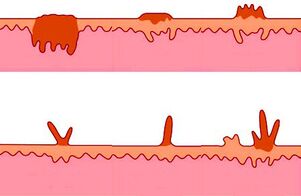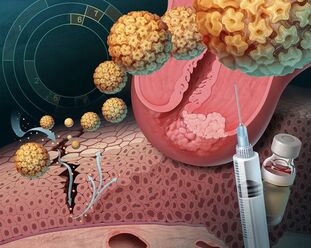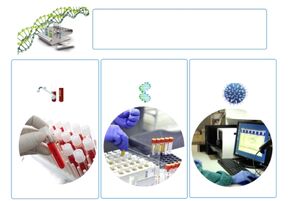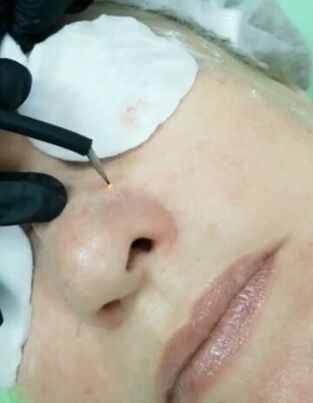
it is even necessary to remove papillomas, because they are not just a cosmetic defect - these are benign tumors (not always) caused by HPV (BirusPapillomasChzpersoni).
Papillomas grow, get injured during hygiene procedures or become inflamed. The growths can be localized to different parts of the body. Genitals, internal organs, nasal mucosa, etc. They can be single and multiple rashes. They often look like cauliflower.
They also vary in color - from transparent to deep brown.
There are many methods to treat papillomas and warts. In addition to the growths themselves, you need to fight the virus yourself. Traditional medicine offers many recipes to get rid of growths, but their independent use is not recommended.
Causes of occurrence
The main reason for the appearance of such formations is the defeat of the body by the papilloma virus. It is transmitted both sexually and through daily life.
We can say that this is a disease. It affects people with weakened immunity, especially women.
So, they often suffer from papilloma during childbirth and after childbirth, when immediate hormonal changes are noticed in the body. Such rashes on the epidermis occur most often after 30 years.

The source of the papilloma virus has not yet been identified exactly, so there are many myths (sometimes wrong) about this. Here are some to share:
Papillomas Papillomas are a clear symptom of old age.According to statistics, such increases occur more often in people after 30-35 years. So it has nothing to do with aging. Those who are overweight are more susceptible to this - favorable conditions are created for papillomas in fat folds due to sweat. Such strokes on the dermis can be found in young people, even teenagers. In such cases, the cause is an inherited predisposition.Better yet it is better to remove papillomas in specialized clinics, although there are many proven folk remedies used at home and allow you to quickly deal with the problem.
is strictly forbidden to pull them out yourself, which is life threatening. In any case, you should first visit a dermatologist and undergo an examination to discover the nature of the neoplasms.
HPV tests

There are over 100 types of HPV, of which at least 13 lead to cancer (also known as high-risk viruses).
An HPV test is a study of biological material taken from a patient. The analysis shows a positive result if the pathogen is present in the body, or negative if there is no viral load.Types of tests:
- Polymerase chain reaction (PCR).This is a test that helps detect the presence of infection and monitors viral concentration.
- Daigen test.Operates on the hybrid capture method. It is based on the differentiation of papillomavirus according to the risk of developing oncology. Rarely used as a single test, usually used in conjunction with other research methods.
- PAP test.The Pap test is similar to the classic cytological examination. It aims to track abnormal cells in the epithelium, which can be used to determine the presence of malignant processes in the body.
Which doctor to contact
The easiest and cheapest way is to contact the nearest KVD. Private clinics are more expensive.
Do not be afraid to go to the doctor, let alone get something in the ambulance. Everything you need - you already have it. Although there is the possibility of hereditary hpv.
- If the lesions are on the skin in the intimate area, you should consult a doctor -surgeonordermatovenerologist.
- If the lesions are located on the mucosa in the intimate area, then you should consult a gynecologistor a urologist.
Methods for removing papillomas

- Cauterization with salicylic acid.To avoid negative consequences, this should only be done by a specialist.
- Surgical intervention.Lesions are cut with a scalpel.
- Laser.This is an alternative to surgery. The method is less traumatic, even in the case of removal of large neoplasms.
- Cryodestruction.Allows you to burn papillomas quickly and effectively using liquid nitrogen. The only drawback of the method is the inability to accurately calculate the nitrogen penetration depth. Therefore, more than one procedure may be required. Moreover, there is no guarantee that papillomas will no longer appear.
- Electrocoagulation. The essence of the technique is in the point action on the focus of the lesion with high frequency electrical impulses. It is indicated for the elimination of papillomas in any part of the body, but is not recommended for the face (there is a high risk of scar formation).
If you want to remove some small papillomas and there are no medical contraindications, then you can use any folk remedy. Just consult a doctor first.
Pharmacy preparations
Surgical removal is not enough to get rid of papillomas. Drug therapy is needed to eliminate the main cause of skin defects - the HPV virus.
Includes the use of:
- immunostimulatory antiviral drugs;
- vitamins; antiseptics
- , local agents of cauterism.
Doses and duration of treatment are determined by your doctor. Ignoring drug therapy is the reason that removing skin growths leads to their recurrence.
Folk remedies
Popular papilloma removal methods offer a large selection of recipes, including:
- using homemade gels and creams;
- compresses based on oils and juices of medicinal plants;
- use decoctions and infusions inside to strengthen the immune system;
- connecting threaded growths, etc.
Many of these techniques are controversial, so you can use folk remedies for papillomas only after consulting a doctor.
Celandine

Practice shows that an effective fight against papillomas is possible with a natural remedy - celandine. The easiest way to use the plant is to lubricate the affected area of skin with freshly squeezed juice from the leaks. The procedure is repeated 1-2 times a day until the neoplasm turns black and disappears.
For those who do not have the opportunity to pluck the stem of a plant, a ready-made pharmaceutical product is suitable.
Often used by HPV patients to remove cosmetic defects. The instruction says that the neoplasm should be steamed, lubricated with cream on healthy skin and a drop of grass should be applied to the protruding area.Burning and tanning show that the healing process is yielding results.
The third way to use celandine to remove papillomas is to make a homemade cream. Fresh plant stems are rolled in a meat grinder, then the juice is squeezed from them through cheesecloth and added to glycerin or baby cream in a ratio of 1: 4. With the resulting composition, the growths are lubricated 1-2 times a dayfor 3-4 weeks. The product should be stored in the refrigerator.
Laundry soap
A simple and affordable recipe for papilloma removal is the use of laundry soap. For procedures, you should choose a product without fragrance and additives.
Has a therapeutic effect due to its powerful antiseptic effect due to the content of the following acids:
- palmitic;
- stearic;
- laurik.
To fight papillomatosis, you should lubricate the affected area with soap every day for a month before bed. As a result of such therapy, the neoplasm should disappear.
To increase the effectiveness of the technique, rub the laundry soap on a grater and combine with water until a creamy consistency is formed.The resulting mass is heated to a temperature of 50 degrees and applied in a thick layer on the affected area.Cover the product with polyethylene. Compression lasts for 30 minutes, then the film is removed to dry the composition. It stays that way for a few hours. The recipe can be used for a week. If accumulation does not disappear during this period, alternative methods should be used.
Powder oil
Castor oil is known for its powerful antimicrobial properties, the ability to stimulate metabolic processes. When applied to a neoplasm, it increases the cells' resistance to HPV, which can help remove the growth.
Removal of castor oil papilloma is performed in two ways:
- apply 1-2 drops of oil on the affected area, rub it on the skin, repeat the procedure twice a day until the papilloma disappears.
- An oily swab is applied to the affected area, fixed with a bandage and left for 1-2 hours.
Practice shows that in the first case, the removal of the accumulation occurs in 2-3 weeks, in the second, often 3-4 days of regular procedures are sufficient. The disadvantage of the rapid scheme is the high probability of allergic reactions. Before using the product, it is advisable to test for the likelihood of individual intolerance.
Potassium permanganate
Potassium permanganate is an established antiseptic used to treat skin problems, one of which is papilloma in the human body. To prepare a healing composition, potassium permanganate is diluted in water until a saturated purple solution is obtained. Then apply in 2-3 drops on the affected area. Thanks to this therapy, the neoplasm turns black, shrinks and then disappears.
To improve the effectiveness of a recipe, you can use the following tips:
- evaporate the aggregate before applying potassium permanganate;
- prepare a fresh solution every time: it has maximum efficiency;
- Leave the product on papillomas overnight.
Potassium permanganate is not used to remove mucosal growths; individual intolerance is a contraindication to its use. If the papillomas are surgically removed, in the recovery period, regular treatment of the wound with a weak solution of potassium permanganate is recommended.
Bandage
Traditional healers give a universal recipe for getting rid of skin growths, according to which they are removed by tying them with a thread.
The procedure is performed according to the following algorithm:
- neoplasm is moistened with an antiseptic.
- Yarn is treated with alcohol.
- The fiber is firmly attached as close as possible to healthy tissue.
- A sterile dressing is placed over the papilloma.
- The condition of the treated area is monitored daily to prevent inflammation.
- The fiber lasts 5-7 days, during which the neoplasm should turn black and fall off.
Doctors do not recommend using this method, at least because the papilloma that has appeared on the body is only an external manifestation of negative internal processes.
Attempts to bandage can lead to inflammation of neoplasms, and in some cases - to their degeneration into malignant tumors.
Surgical methods
The answer to the question of how to deal with papillomas on the body can be given by a doctor after a PCR test. This study shows that the HPV virus is the cause of the growths.
An integrated approach is used to treat it, including:
- taking antiviral drugs;
- use of immunomodulators;
- vitamin therapy;
- surgical removal of neoplasms.
Is drug-free removal effective? No, because removed growths can recur if the patient's body is weakened by disease or other negative factors.
important it is important to understand that it is strictly forbidden to remove papillomas yourself with a razor, scissors, thread and other improvised methods. This can lead to infection, shutdown and other negative consequences.
Radiosurgery
This is a non-contact method for affecting skin neoplasms. Its essence lies in the fact that high-frequency radio waves destroy pathological tissues, due to which papillomas disappear without leaving marks or scars.
Radio wave surgery is not used for women during pregnancy, during menstruation, for cancer patients, chronic remission diseases, diabetes mellitus.
The removal procedure involves the following steps:
- the patient is in a chair.
- The site of exposure is treated with an antiseptic.
- Local anesthesia is administered at the request of the patient.
- The doctor operates on the neoplasm with a special device that produces radio waves.
- A small wound remains at the site of exposure, which is treated with an antiseptic.
No bleeding occurs, the only drawback of the method is its pain. After removing the papilloma, clothing is not necessary, exposure to moisture is not prohibited, it is enough to refuse long bath procedures and the use of a washing cloth.
Avoid direct sunlight, do not put cosmetics on the wound.
An important feature of radiosurgery is the possibility of using it in those areas where access to a laser or electrosurgical unit is difficult (labia, cervix).
Laser coagulation
Laser removal of papillomas is the process of evaporating them using a laser beam. Neoplasms have a thin stalk, so they are easily destroyed. The procedure takes a few minutes, in some cases several sessions are required. Anesthesia is done at the request of the patient.
Laser removal of papillomas on the body has the following advantages:
- security;
- minimal risk of side effects;
- lack of signs and symbols;
- painless;
- low risk of papilloma recurrence at the site removed;
- short recovery period.
The procedure is not performed if the following contraindications exist:
- pregnancy;
- last tan;
- oncological diseases;
- colds;
- diabetes mellitus.
Removal procedure takes 5-7 minutes. Thanks to the ability to adjust the intensity of the laser beam and the duration of the pulse, the likelihood of "touching" healthy areas of the skin is ruled out. After surgery, a crust forms on the treated area, which falls off after 1-2 weeks, leaving no scar or scar.There is no blood loss because the laser seals the blood vessels.
Postoperative care after laser treatment involves the use of oils that speed up healing for the first 2-3 days. The patient is advised to refrain from sunburn, baths, saunas and avoid hypothermia for 1-2 weeks.
Electrocoagulation
This is a method of removing papillomas, which involves exposing the affected area of skin to electric current waves of varying frequency and intensity. Its second name is skin moxibustion, because under the influence of heat energy, benign neoplasms heat up and fall off. It is believed that this method of treating growths is a budget alternative to laser coagulation.
The benefits of electronics include:
- the ability to get rid of growth in one session;
- simplicity and safety of the procedure;
- ability to use the removed material for further research (helps to identify what caused the growth: papillomaviruses or other factors);
- accuracy, direction of exposure to electricity;
- full visual control over the procedure;
- relatively low cost.
Disadvantages of removing the build-up of electricity include a high probability of recurrence, soreness and a long period of wound healing (up to 10 days). Signs or spots of age may appear.
The procedure is not performed for individuals with individual intolerance to electricity, decreased blood clotting, patients suffering from acute illness or chronic illness in the acute phase.
Increases are removed with local anesthesia.The patient sits comfortably in a chair, the doctor selects the desired electrocoagulator nose, acts on the neoplasm. The blood vessels are closed, so there is no bleeding. A crust appears on the treated area, which disappears after 7-10 days. The duration of the session is from a few seconds to 20 minutes.
After removing the papilloma with electric shock, the patient should not wet the treated area for a week. Wound healing and antiseptic agents are applied to the skin.
IMPORTANT!
It is necessary to refrain from sunbathing, to go to the bath, the pool.
Cryotherapy
This is a treatment for ultra-low temperature liquid nitrogen papillomas. Its effect on pathological tissues leads to their freezing, after which the neoplasm disappears.
The resulting removal effect depends on two factors:
- individual sensitivity to the action of liquid nitrogen;
- professionalism of the cosmetologist.
- using the applicant;
- with a special device - a cryodestructor.
The choice of technique is determined by the case characteristics and technical equipment of the clinic. The average duration of the procedure is about 2 minutes. Performed without anesthesia, the appearance of discomfort is possible: cold, tingling sensation, slight burning. Bleeding does not occur because low temperatures block blood vessels.
Cryotherapy is not used for individuals with individual intolerance to the cold, patients with oncological diseases and inflammatory processes in the body.
After nitrogen removal, the papilloma hardens and turns white, then a scab is formed, which disappears after 2-4 weeks. For seven days after the procedure, the patient is advised to exclude contact of the water-treated skin area, refuse sunburn, and use cosmetic products to mask the defect.
Virus Prevention
There is an opinion that papillomas are not "harmful" to humans, they are just a cosmetic defect. Medical practice proves the opposite: their presence is a consequence of HPV infection and lack of treatment can lead to serious consequences, one of the most dramatic is the development of malignant tumors. This is why doctors recommend removing neoplasms with a complex method, including surgery and medication.
To minimize the likelihood of contracting HPV, the following specialist recommendations should be followed:
- do not walk barefoot in places where it is hot and humid (sauna, swimming pool, shared shower): these places are the most favorable habitat for viruses and bacteria.
- Use condoms during sex (they reduce the chances of infection and HPV infection by 70%), avoid accidental intimate intercourse.
- Be careful in choosing beauty salons, avoid places where sterility is considered "poor".
- Do not use hygiene items (toothbrush, sink, comb, etc. ) and clothing of a person infected with the HPV virus.
- Cure colds in time leading to reduced immunity.
- it is imperative to coordinate the use of hormonal contraceptives with a doctor: they can lead to hormonal imbalance.
Conclusion
Everyone decides for themselves which method to remove papillomas should choose. You just have to remember that this is a signal about existing disorders in the body.
Therefore, you should first see a doctor and undergo a medical examination. Above all, diseases of viral etiology require treatment from within.























